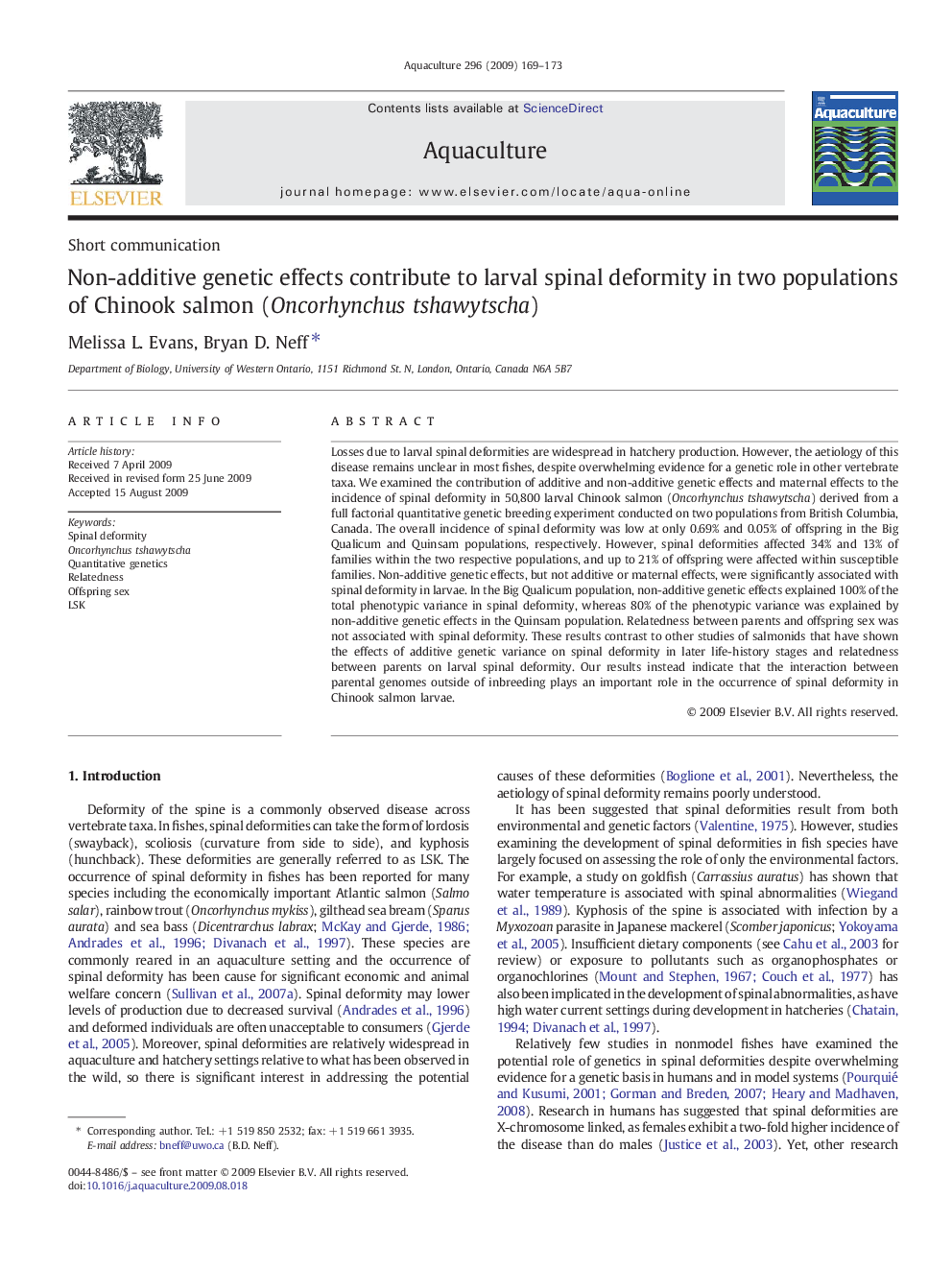| Article ID | Journal | Published Year | Pages | File Type |
|---|---|---|---|---|
| 2423897 | Aquaculture | 2009 | 5 Pages |
Losses due to larval spinal deformities are widespread in hatchery production. However, the aetiology of this disease remains unclear in most fishes, despite overwhelming evidence for a genetic role in other vertebrate taxa. We examined the contribution of additive and non-additive genetic effects and maternal effects to the incidence of spinal deformity in 50,800 larval Chinook salmon (Oncorhynchus tshawytscha) derived from a full factorial quantitative genetic breeding experiment conducted on two populations from British Columbia, Canada. The overall incidence of spinal deformity was low at only 0.69% and 0.05% of offspring in the Big Qualicum and Quinsam populations, respectively. However, spinal deformities affected 34% and 13% of families within the two respective populations, and up to 21% of offspring were affected within susceptible families. Non-additive genetic effects, but not additive or maternal effects, were significantly associated with spinal deformity in larvae. In the Big Qualicum population, non-additive genetic effects explained 100% of the total phenotypic variance in spinal deformity, whereas 80% of the phenotypic variance was explained by non-additive genetic effects in the Quinsam population. Relatedness between parents and offspring sex was not associated with spinal deformity. These results contrast to other studies of salmonids that have shown the effects of additive genetic variance on spinal deformity in later life-history stages and relatedness between parents on larval spinal deformity. Our results instead indicate that the interaction between parental genomes outside of inbreeding plays an important role in the occurrence of spinal deformity in Chinook salmon larvae.
